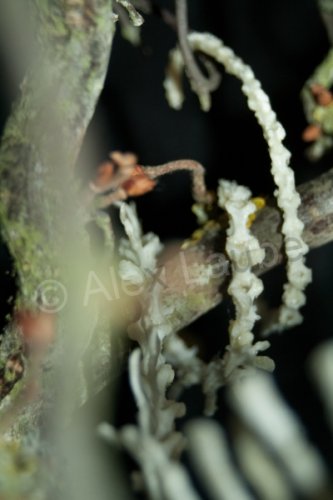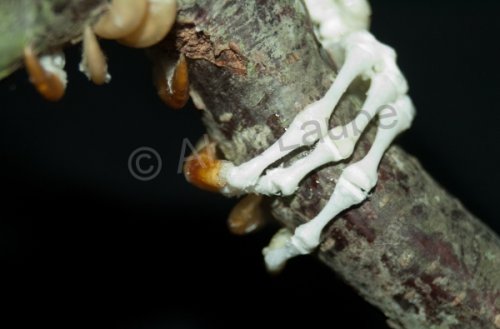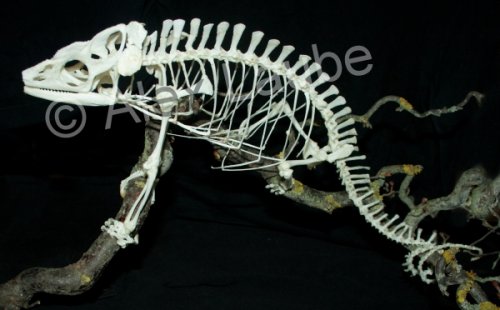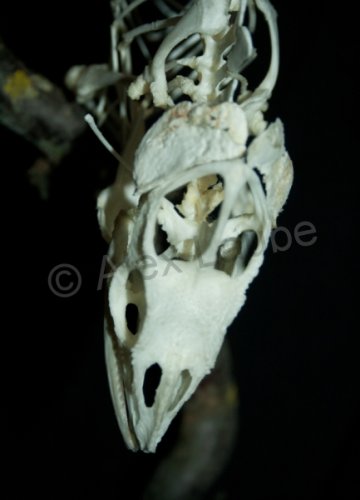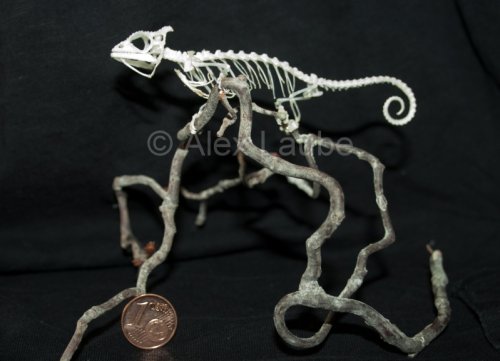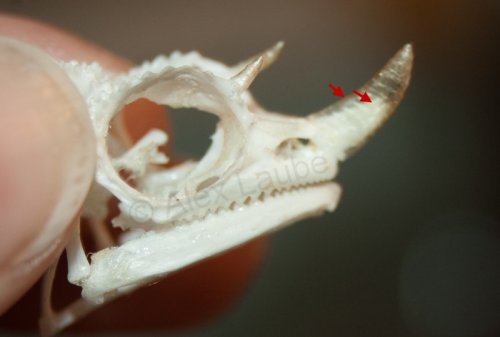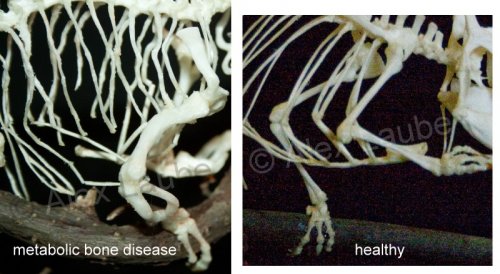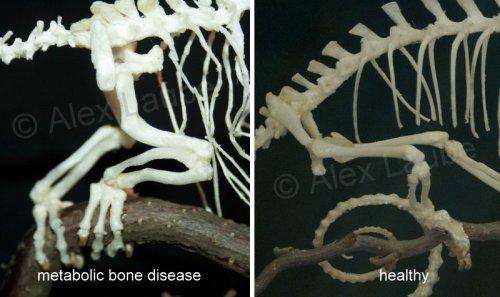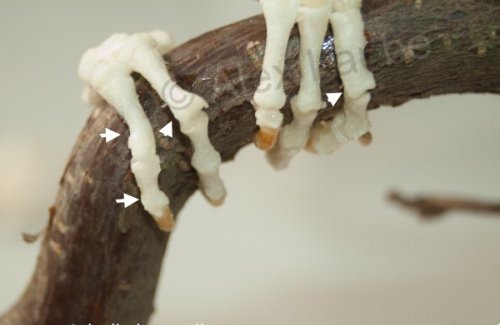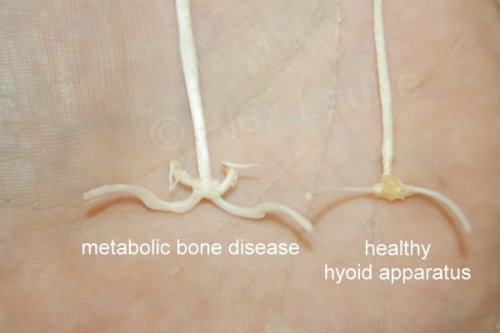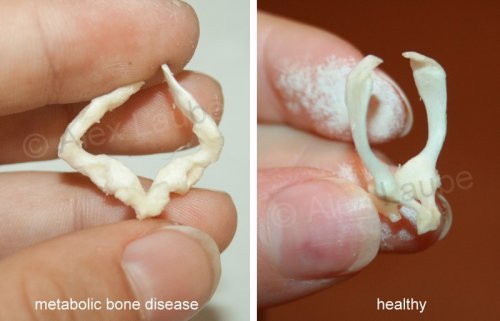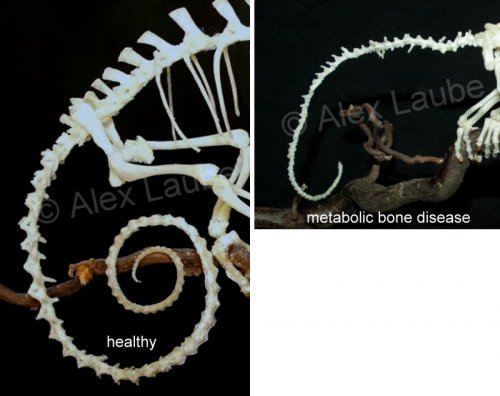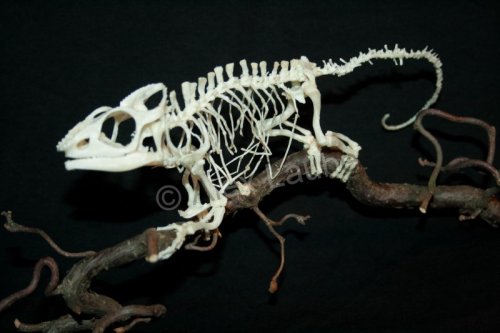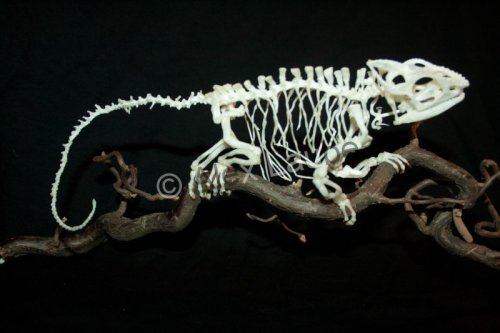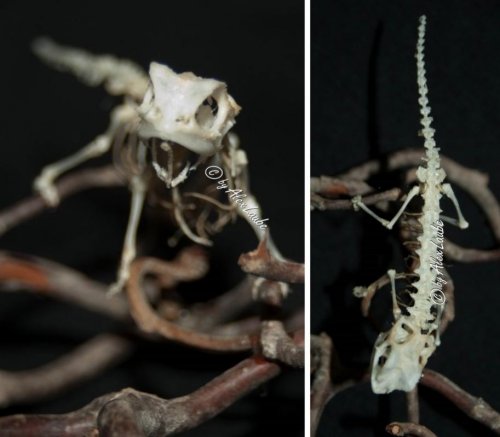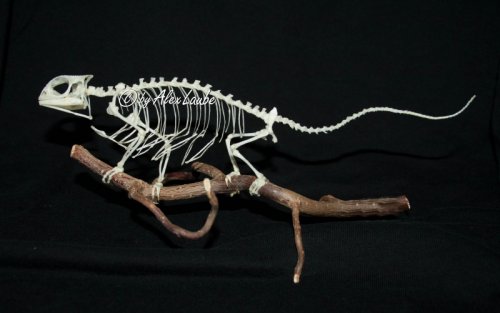Navigation
Install the app
How to install the app on iOS
Follow along with the video below to see how to install our site as a web app on your home screen.
Note: This feature may not be available in some browsers.
More options
You are using an out of date browser. It may not display this or other websites correctly.
You should upgrade or use an alternative browser.
You should upgrade or use an alternative browser.
Chameleon skeletons
- Thread starter Alexl
- Start date
Alexl
Avid Member
My latest guy, a Chameleo melleri male. Very nice one with a lot of signs of his ripe old age. He has spondylosis, exostosis at hands, feet and elbows, ossification of all cartilage (especially the spine), a callus from a broken rib in the past, a nagged nose tip... he's just fascinating in every little part. I tried to rebuild the occipital flaps, but unfortunately they broke to pieces and I needed to repair them as best I could. The branch he's placed on is about 20,5 inches (52 cm) long.
Attachments
Chameleonmaster
Avid Member
Wow what a collection of DEAD chameleons you have!!!!!
Alexl
Avid Member
A Bradypodion setaroi female. This single skeleton is up for graps, it will be auctioneered at DGHT yearly conference (DGHT = german society for herpetology and herpetoculture) on september 22th besides many other interesting things in Gera (a city about an hour south of Leipzig), Germany . All proceeds go to a conservation projekt for the malagasy golden frog (Mantella aurantiaca).
Attachments
justjumpit621
New Member
I lost my male veiled a few months ago, and I had had him in the freezer since yesterday when I buried him and happened to come across your thread today. I find this very fascinating, and may go back out and dig my guy back up  How would I go about doing this? Is there a way I could get the flesh and tissue off of the bones without having to take it off by hand? Since he was mine I may be more squeamish
How would I go about doing this? Is there a way I could get the flesh and tissue off of the bones without having to take it off by hand? Since he was mine I may be more squeamish  I have done this with mouse bones before, I would think his bones would be easier to assemble.
I have done this with mouse bones before, I would think his bones would be easier to assemble.
Alexl
Avid Member
This is the head of a male Trioceros jacksonii willengensis. Due to his younger age, you can easily see the difference between the bony base shining through and the horn scale itself . The horn scale's really thin yet, thinner than any human thumbnail. I could remove the horn carefully and put it back after preparation.
Attachments
Alexl
Avid Member
This is a really severe case of metabolic bone disease in a Furcifer pardalis male . He was under therapy for weeks (that's why his bones began to heal), but finally his organs were already too damaged to save him.  I only prepared this skeleton as an example for patient owners to learn from...
I only prepared this skeleton as an example for patient owners to learn from...
To sum up the problems you can see in the pictures: His jaws are deformed, teeth are partially absent (especially in the front), every single rib was broken earlier and deformed, even his hyoid apparatus and some fingers are warped compared to healthy chameleons. His spine has several old fractures, some vertebrae are completely out of place (and yes, he could still walk around, only a part of his tail hardly moved). His shoulders and hips are bent down like a sickle, forearms and thighs look as someone had folded them like paper (old fractures and deformations). The breastbone has a hole and his eye socket isn't really round shaped.
Hope this little guy can make everyone think about importance of proper care, especially UVB-lightning and feeding supplements. And about what really happens to the skeleton if a chameleon had MBD. Sometimes it doesn't look that ugly outside, skin and muscle may cover first signs. And there are still owners who can't imagine MBD could be painful - think those pictures might convince them it is. Would be nice if people could see this before buying a chameleon without knowing how to care for.
I give you some pictures of a healthy Furcifer pardalis male to compare and make the deformations easier to recognize.
To sum up the problems you can see in the pictures: His jaws are deformed, teeth are partially absent (especially in the front), every single rib was broken earlier and deformed, even his hyoid apparatus and some fingers are warped compared to healthy chameleons. His spine has several old fractures, some vertebrae are completely out of place (and yes, he could still walk around, only a part of his tail hardly moved). His shoulders and hips are bent down like a sickle, forearms and thighs look as someone had folded them like paper (old fractures and deformations). The breastbone has a hole and his eye socket isn't really round shaped.
Hope this little guy can make everyone think about importance of proper care, especially UVB-lightning and feeding supplements. And about what really happens to the skeleton if a chameleon had MBD. Sometimes it doesn't look that ugly outside, skin and muscle may cover first signs. And there are still owners who can't imagine MBD could be painful - think those pictures might convince them it is. Would be nice if people could see this before buying a chameleon without knowing how to care for.
I give you some pictures of a healthy Furcifer pardalis male to compare and make the deformations easier to recognize.
Attachments
Niels Pedersen
Established Member
Damn, alot of new skeletons. And why is it that you have not shared them with me yet?  You know that I can use them all on my site
You know that I can use them all on my site  Lets have a serious talk on facebook!
Lets have a serious talk on facebook!
MollyT
New Member
if you dont mind me asking where did you get so many cham skeletons? hopefully they wherent used in the name of "art" like what Katinka Simonse (sicko...) does....
After I read that, I had to look her up.
These are fascinating! Thanks so much for sharing!
ShipYourReptiles
Member
I was looking forward to more pics, thanks.
rsepiphyte
Established Member
Absolutely fascinating! I have learned so much from the skeletal remains of these chameleons. You are an artist and others learn from your craft! Ruth
Niels Pedersen
Established Member
For those of you interested, you can find more chameleon skeleton/ skulls here
http://kamaeleoner.dk/generelt-om-kamaeleoner/24-morfologi/224-skelettet.html
http://kamaeleoner.dk/generelt-om-kamaeleoner/24-morfologi/224-skelettet.html




